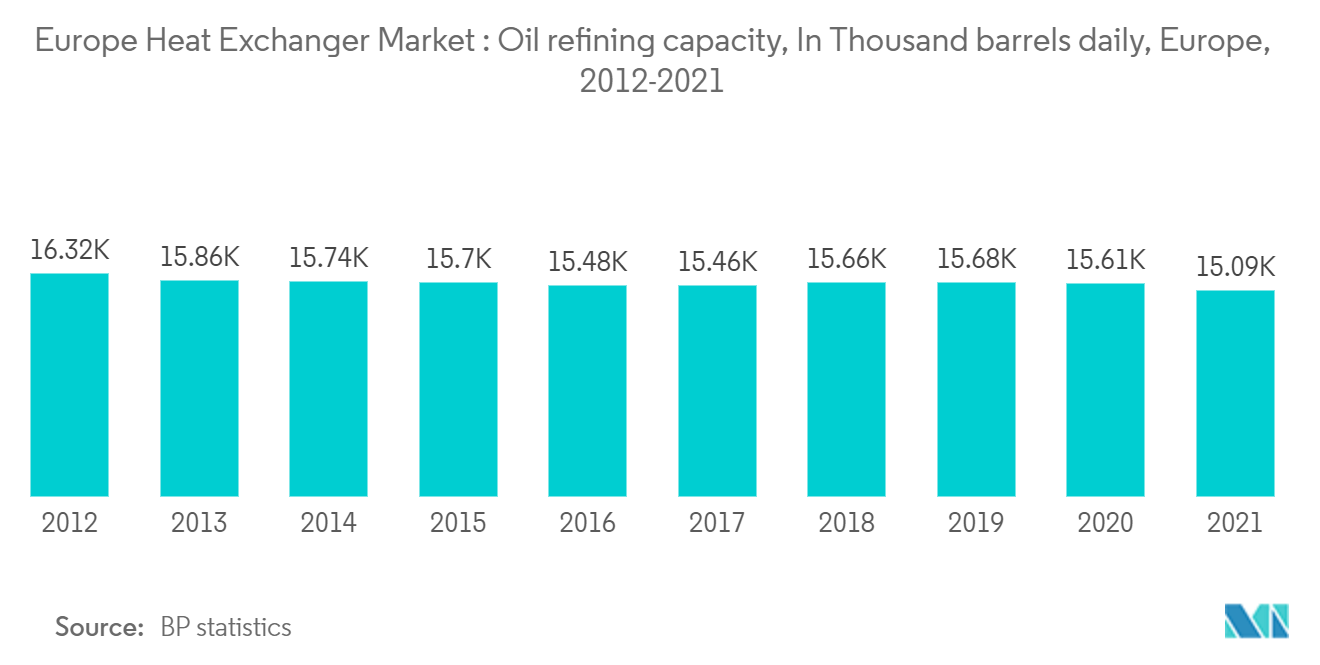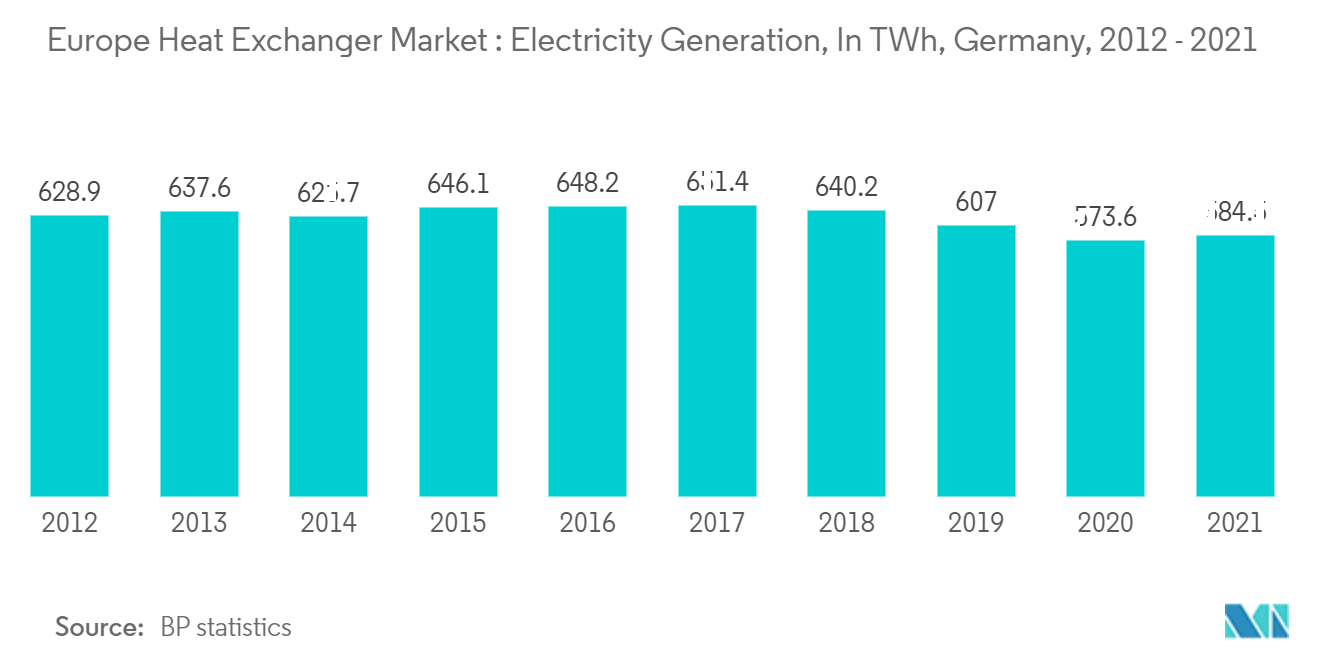Market Trends of Europe Heat Exchanger Industry
This section covers the major market trends shaping the Europe Heat Exchanger Market according to our research experts:
Industrial Segment to Dominate the Market
- The Europe Heat Exchanger Market has been evolving to meet the ever-changing demands of industrial processes and the environment in which they have to work. The manufacturing companies have introduced new hybrid heat exchangers that are highly efficient and flexible.
- Moreover, Heat exchangers are crucial in the processing of oil and gas. They are utilized in the natural gas liquefaction and the refining process of the cracking unit. The process of "cracking" involves chopping up the hydrocarbons that make up crude oil.
- In 2021, Europe's total oil refining capacity accounted for 15,609 thousand barrels daily. With a total global share of 14.8%, expected to increase in the forecast period driving the industrial heat exchanger market in the industrial sector as it is used in the refining process.
- Shell and tube heat exchangers can manage fluids at high temperatures and pressures. Due to this, they have been preferred in various applications, such as chemical, petrochemical, oil and gas, food and beverage, and power generation.
- Thus, with the increasing use of heat exchangers in different applications in the industrial sector, the industrial segment is expected to dominate in the forecast period.

Germany to Dominate the Market
- The German heat exchanger market size is anticipated to register a significant growth rate over the forecast period. Rising concerns about environmental pollution, along with shifting trends to curb carbon emissions across the industrial sector, may augment business growth.
- The growing demand for centralized heating systems across the commercial and residential sectors may significantly contribute to industry expansion.
- In 2021, Germany's electricity generation accounted for 584.5 Terawatt-hours. Germany's electricity generation is expected to increase in the future, which, in turn, is expected to support market growth as heat exchangers are used in thermal power plants to generate electricity.
- Germany has been transforming waste heat into electricity with the help of a heat exchanger used in the thermal power plant and increased electricity consumption by 35%.
- Low-pressure drop, economic viability, and high efficiency are some of the significant features that may favor product adoption over available alternatives.


